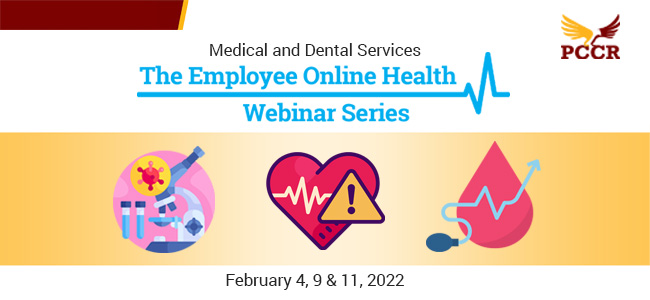As the popular adage goes: “Health is Wealth”. With this in mind, it is in the best interest of any organization to care for and maintain the health and wellness of one of its most essential resources — its employees.
With the initiative of the Medical and Dental Services Department, The Philippine College of Criminology (PCCR) presented a three-day webinar series on February 4, 9, and 11, to discuss some of the urgent and pressing concerns in health and wellness. Presented by School Physician Dr. Janice I. Reyes, the webinar series enlightened the attendees on the Novel CoronaVirus Disease 2019 (COVID-19) pandemic and the “silent killer”, Hypertension.
The first webinar was about all the pertinent details on the global pandemic brought about by COVID-19. Dr. Reyes clarified that the term CoronaVirus is actually a family of viruses that lead to severe pneumonia and pulmonary diseases that include Severe Acute Respiratory Syndrome (SARS) and Middle East Respiratory Syndrome (MERS). She also pointed out that the new variant Omicron was reported to last longer on plastic surfaces and on skin, and is more resistant to alcohol sanitizers compared to the previous evolutions of the virus.
Dr. Reyes provided the attendees with important tips that they could do from home to protect against infection. Along with the usual pointers of physical distancing, hand washing, and mask wearing, she also advised the attendees to exercise regularly, stay hydrated, and take vitamins and supplements. Oxygen Saturation and Blood Pressure must also be monitored, and a medical expert must be consulted immediately in case of symptoms.

Since the topic of Hypertension is very extensive, this was discussed over two sessions. For Part 1, Dr. Reyes explained that there are actually two types of hypertension, or high blood pressure. The first type, called Primary or Essential Hypertension, has no identifiable cause and tends to develop gradually over time. The other type, Secondary Hypertension, usually has an underlying cause and is acute or appears suddenly. While the traditional reading of High Blood Pressure is 140/90 mmHg, more recent readings are set at 130+/80+ mmHg.
The first half of the two-part series on Hypertension detailed the proper way of taking one’s Blood Pressure. One insight that was brought up during the discussion was that automatic or digital blood pressure monitors tend to take more accurate readings compared to manual sphygmomanometer readings. This is due to the fact that the latter tends to be affected by human bias and White Coat Syndrome, where the patient’s blood pressure rises when a medical professional approaches.
Day Two touched on the proper management of elevated blood pressure. The usual tips of proper food, exercise, and stress relief were discussed together with a reminder to curb or eliminate vices such as Smoking and Alcohol, and to monitor blood pressure regularly.
Among the different medications used to manage Hypertension that were discussed are Angiotensin receptor blockers (ARBs) or Angiotensin-converting enzyme (ACE) inhibitors, Beta blockers, Calcium channel blockers, and Diuretics.
Failure to properly monitor and manage Hypertension may lead to Stroke, Heart Failure, or Myocardial Infarction (better known as a Heart Attack).
